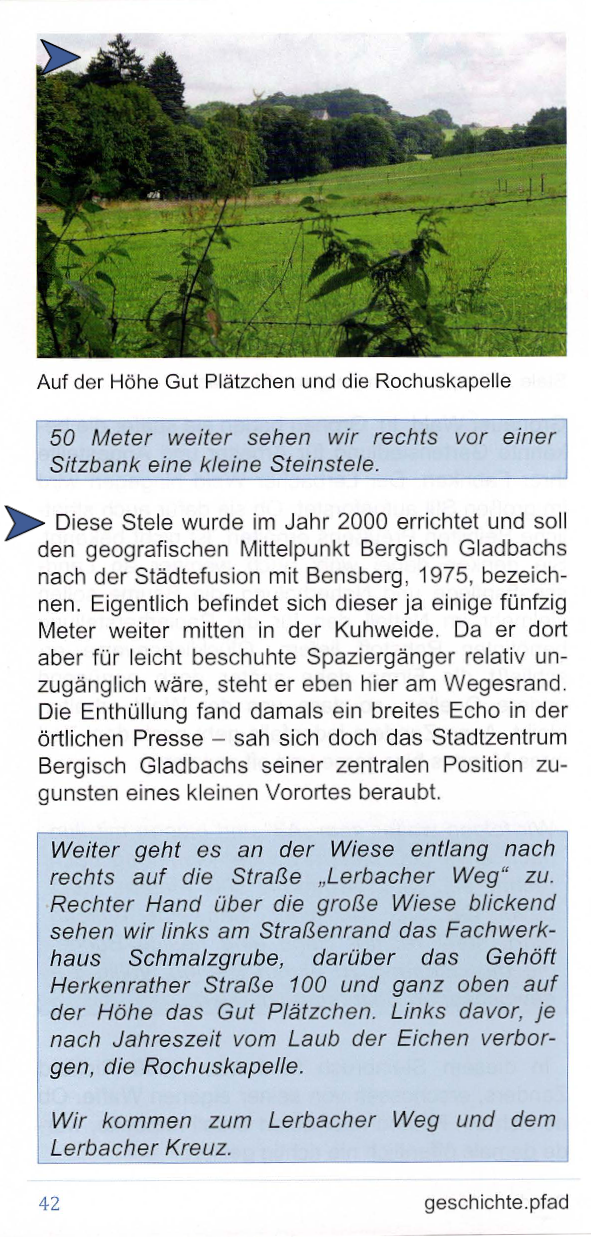geschichte.pfad
Historischer Wanderweg Sand
von Manfred Dasbach und Udo Harler
Kapitel 14
Der Lerbacher Wald
Seiten 40 - 42
Download der kompletten Broschüre
"geschichte.pfad Historischer Wanderweg Sand"
mit englischen Texten

|
In the beginning in the 16th century a lot of settlements and enterprises sprung up in the County of Berg. The number of farmyards and business enterprises increased to an astonishing degree. The wood from the local forests was used as building material and also provided the necessary energy. As early as the beginning of the 17th century there were complaints that the “bushes” were full of fortification lines formed by felled trees and that it was necessary to buy charcoal from abroad. In 1834 the County of Berg was described as follows: “Either the hilltops are deforested or they are covered with heather and small, crippled birch trees”. It was only in the mid 19th century that a gradual reforestation program set in which was brought about by government subsidies paid by the Prussian State. In the middle of what is today Lerbach Forest and for quite a long time there were several estates as well as ore mines and other business enterprises. Compact woodlands as we know them today were unknown in those days. Towards the end of the 19th century Richard and Anna Zanders bought Lerbach Manor. |

|
|

|
|
nach oben
| vorheriges Kapitel | Übersichtskarte | nächstes Kapitel |
Mit freundlicher Unterstützung durch
